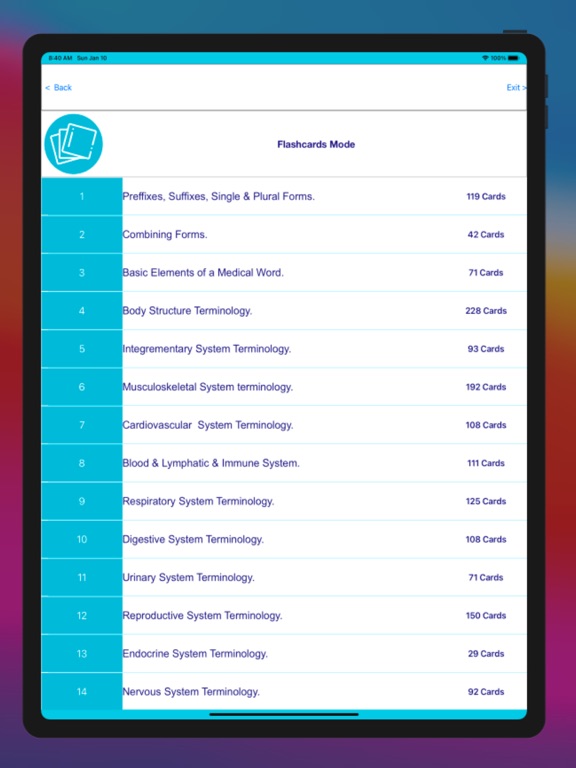
Medical Terminology by Branch
Medical terminology is language used to describe the human body including its components, processes, conditions affecting it, and procedures performed upon it.
*App features:
This app contains 2750 study notes, flashcards and exam quizzes.
With the advanced features of this app you can do the following:
1- Get 5 study methods which suits 99% of candidates
2- you can listen to the content of this app with our hands free technology, just put your ear pods and enjoy learning on the go and everywhere.
3- you could add your comments and notes to each flashcard.
4- you can even edit the content of the study notes if you wish to elaborate more the content or to add something new.
5- you can add you own flashcards, notes or quizzes.
6- you can flag any flashcard or quiz or put it in your favorite list for later review.
7- The wrong answered quizzes will be automatically selected for future review.
8- you can monitor your study session results easily.
9- you can search all the quiz and notes with the "Search button" by topic or key words.
10- you can go back to your last session to exactly the last flashcard or quiz you were studying.
11- you can navigate the chapters and flashcards easily with the "Go To" button.
12- This app monitors how many times you studied a specific flashcards.
also you can now share the content of this app with your colleagues and friends.
We proudly could say that this the best and most sophisticated learning app ever developed in the app store.
Medical terminology has quite regular morphology, the same prefixes and suffixes are used to add meanings to different roots. The root of a term often refers to an organ, tissue, or condition. For example, in the disorder hypertension, the prefix "hyper-" means "high" or "over", and the root word "tension" refers to pressure, so the word "hypertension" refers to abnormally high blood pressure. The roots, prefixes and suffixes are often derived from Greek or Latin, and often quite dissimilar from their English-language variants. This regular morphology means that once a reasonable number of morphemes are learnt it becomes easy to understand very precise terms assembled from these morphemes. Much medical language is anatomical terminology, concerning itself with the names of various parts of the body.
Medical terminology often uses words created using prefixes and suffixes in Latin and Ancient Greek. In medicine, their meanings, and their etymology, are informed by the language of origin. Prefixes and suffixes, primarily in Greek—but also in Latin, have a droppable -o-. Medical roots generally go together according to language: Greek prefixes go with Greek suffixes and Latin prefixes with Latin suffixes. Although it is technically considered acceptable to create hybrid words, it is strongly preferred not to mix different lingual roots. Examples of well-accepted medical words that do mix lingual roots are neonatology and quadriplegia.
Prefixes do not normally require further modification to be added to a word root because the prefix normally ends in a vowel or vowel sound, although in some cases they may assimilate slightly and an in- may change to im- or syn- to sym-.
Suffixes are attached to the end of a word root to add meaning such as condition, disease process, or procedure.
In the process of creating medical terminology, certain rules of language apply. These rules are part of language mechanics called linguistics. The word root is developed to include a vowel sound following the term to add a smoothing action to the sound of the word when applying a suffix. The result is the formation of a new term with a vowel attached (word root + vowel) called a combining form. In English, the most common vowel used in the formation of the combining form is the letter -o-, added to
Suffixes are categorized as either (1) needing the combining form, or (2) not needing the combining form since they start with a vowel.



